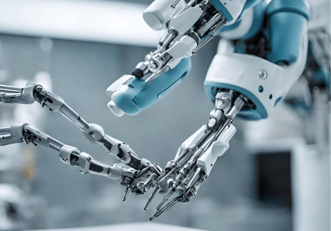Surgical Robotics Economics: Cost-Effectiveness & Long-Term Benefits
Surgical robotics is an exciting and rapidly advancing field that promises to revolutionize the way many procedures are performed. While the initial costs of implementing robotic surgical systems can be high, the potential long-term economic benefits are significant when factoring in improved patient outcomes, shorter hospital stays, and a reduction in complications and follow-up procedures.
The High Initial Investment
There's no denying that surgical robotic systems, like the da Vinci robot, come with a steep price tag, often costing hospitals millions to acquire the technology and train staff. A single da Vinci system can cost over $2 million, not including annual service costs. This high upfront expense is a major barrier for some hospitals and healthcare facilities considering an investment in surgical robotics.
However, it's important to look beyond the initial capital outlay and consider the big-picture economic impacts. While $2 million may sound exorbitant, that cost is relatively small compared to the immense healthcare spending and costs associated with complications from traditional open surgeries over time.
Improved Patient Outcomes Research shows that robotic-assisted surgery can lead to significantly better outcomes for patients across a range of procedures compared to traditional open surgery methods. Patients tend to experience less pain, scarring, blood loss, and quicker recovery times with robotic surgery.
Research shows that robotic-assisted surgery can lead to significantly better outcomes for patients across a range of procedures compared to traditional open surgery methods. Patients tend to experience less pain, scarring, blood loss, and quicker recovery times with robotic surgery.
For example, a study on robotic prostatectomies found a 59% reduction in the risk of post-surgical complications like infection and shorter hospital stays compared to open surgeries. For hysterectomies, robotic approaches reduced the chances of being readmitted to the hospital within 30 days by 47%.
Better outcomes translate into lower overall costs by reducing hospital readmissions, follow-up treatments, prescription drug needs, and more. While the upfront costs are higher, the lifetime treatment costs can be massively reduced through robotic surgery.
Long-Term Cost Savings
Multiple analysis attempts to quantify the potential cost .png?width=318&height=223&name=Surgical%20Robotics%20Savings%20(2).png) savings have supported the economic case for surgical robotics despite high initial expenditures. One study estimated that widespread adoption of robotic surgery systems across the U.S. could lead to annual savings between $1.5-$6.5 billion by helping avoid costs related to surgical complications, follow-up treatments, and other associated expenditures.
savings have supported the economic case for surgical robotics despite high initial expenditures. One study estimated that widespread adoption of robotic surgery systems across the U.S. could lead to annual savings between $1.5-$6.5 billion by helping avoid costs related to surgical complications, follow-up treatments, and other associated expenditures.
Another UK-based study focused specifically on robotic prostate removal surgeries calculated potential cost savings of over £286 million for the National Health Service over 20 years after accounting for the upfront technology costs. The savings stemmed from reduced length of stay, fewer later treatments, and faster recovery times getting patients back to normal activities.
The economic case gets even more compelling over a multi-decade timeframe as hospitals can leverage investments in robotic systems for many years after the initial capital outlay.
An Emerging Industry & Innovations on the Horizon
It's also important to note that surgical robotics is still an emerging and rapidly evolving field, with new innovations on the horizon that could further improve the efficiencies and capabilities.
Medical device development companies like Boston Engineering are helping to push the boundaries through cutting-edge new robotic designs,  enhanced precision and dexterity, and next-generation features that could make future surgical robots even more cost-effective.
enhanced precision and dexterity, and next-generation features that could make future surgical robots even more cost-effective.
As robotic surgical systems continue advancing and adoption increases, the costs are likely to come down over time while the benefits compound through experience and iteration of the technology.
The Takeaway
While the sticker price of surgical robots is certainly an eye-popping number, it's short-sighted to simply look at the upfront expenditure required. By improving outcomes, shortening hospital stays, reducing complication rates, and getting patients back on their feet faster, the long-term economic case for surgical robotics is quite compelling from a cost-savings perspective.
Hospitals and healthcare facilities need to take a big-picture view of the economic impacts when assessing the value of investing in these important technological advancements in the surgical field. As surgical robotics continues emerging and evolving, the economic benefits could be transformative across the healthcare system.
For almost three decades, Boston Engineering has designed, developed, and optimized devices and technologies the medical community relies on to save lives, enrich quality of life, and reduce costs to the healthcare system. We provide solutions to the challenges in the adoption of surgical robotics.
Our expertise includes industrial design and product redesign, sensors and control systems, robotics technical innovation, and digital software solutions.
Imagine your Impact: Stay up-to-date with the latest insights and trends we're watching. Add your email address below and sign up for a monthly summary of our most impactful posts!









.png)


